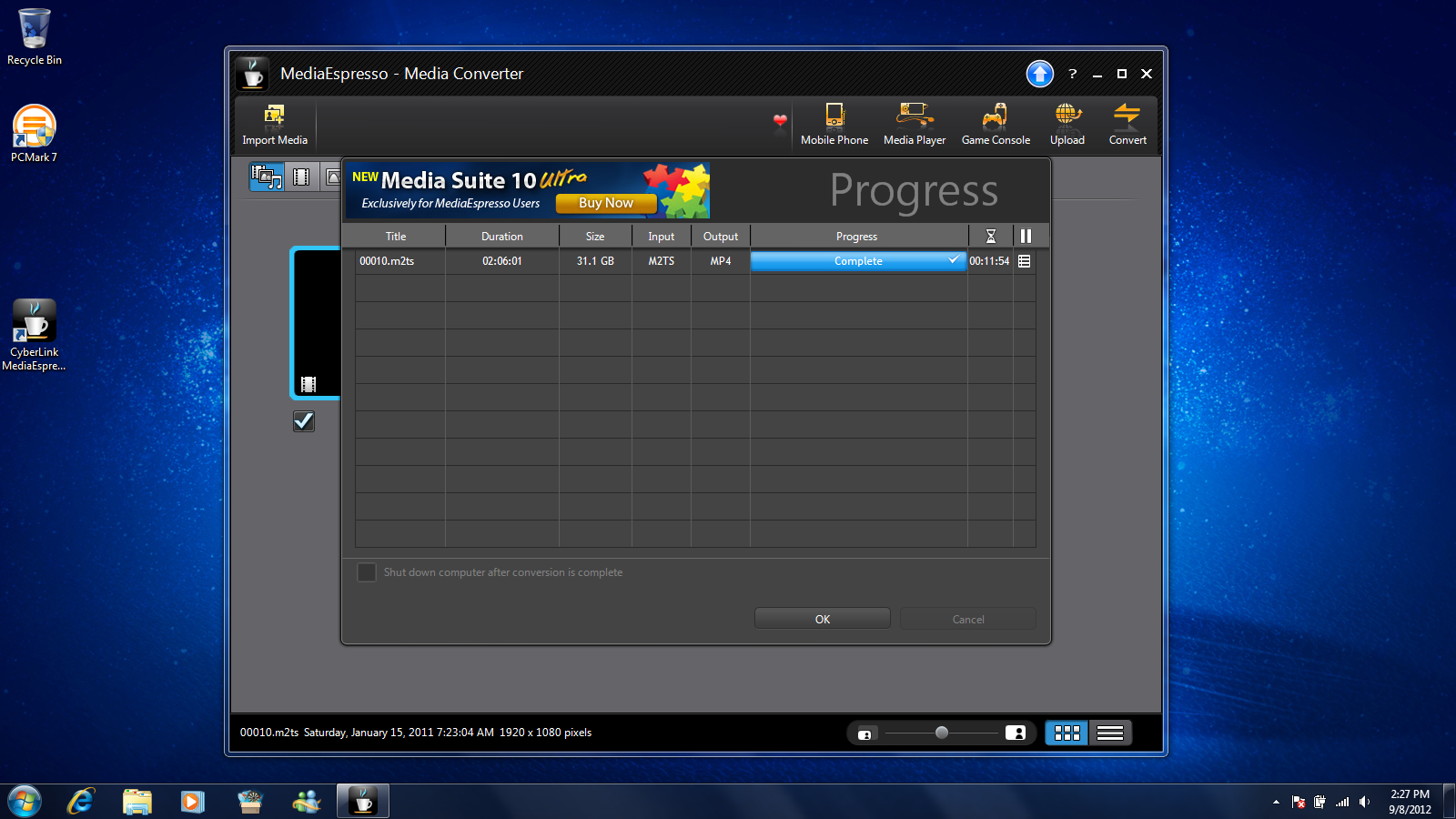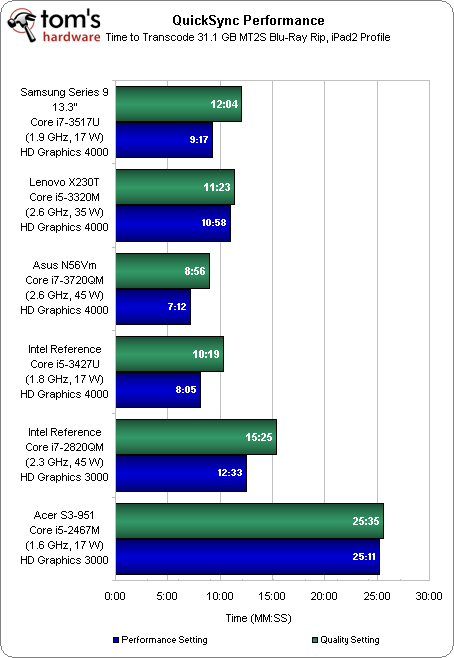Samsung's Series 9 13.3" Ultrabook For 2012: Thinner And Lighter
Transcoding Performance: Second-Gen Quick Sync
Quick Sync remains one of the most useful and innovative features to come from Intel in recent memory. Using optimized software, the features comprising Quick Sync accelerate video decode and encode, making it possible to reformat content in a fraction of the time that would have been required by x86 cores operating on their own. Will anyone tackle transcoding on their Ultrabook, though? More than likely, no.
In our opinion, most folks maintain media libraries on large local or networked disk drives. This means there are far more likely to transcode video on a potent desktop and then move it over to their mobile device. That might not be an option if you use a machine like Samsung's Series 9 as your primary computing device, though. Quick Sync does make it possible to convert video quickly (and with little power cost), and then move it over to a smartphone, for example. We've also used it at trade shows to get coverage YouTube-ready.
With the exception of Lenovo's ThinkPad X230T, all of the systems we benchmarked benefit from an SSD. Of those armed with solid-state storage, only the 13.3" Series 9 leverages an SSD other than Crucial's m4. The X230T falls behind the other machines with Ivy Bridge-based processors because its storage subsystem cannot keep up with the hardware-accelerated conversion.
The HD Graphics 3000-equipped Acer comes equipped with a Sandy Bridge-based CPU, which leverages first-gen Quick Sync functionality. The difference between old and new is particularly pointed.
Get Tom's Hardware's best news and in-depth reviews, straight to your inbox.
Current page: Transcoding Performance: Second-Gen Quick Sync
Prev Page Benchmark Results: PCMark 7 And Battlefield 3 Next Page Display Performance: SuperBright Plus, Indeed-
mayankleoboy1 Is the QS balance between quality/speed determined by any OEM customised driver ?Reply
Because this samsung notebook takes more time than other i7's in 'quality' setting, but lesser time in 'performance' settings.
-
mayankleoboy1 in the screen quality/brightness benchmark, why u no compare with the new rMBP ?Reply -
joytech22 esreverDon't samsung ultra books overheat a lot?What..? No. That's the dell's and I'm not even joking.Reply
I was watching a demo and their Dell XPS ultrabooks with GT640's in them continuously overheated during the demos and lowered the FPS catastrophically low.
They have these ultrabooks at my local Jb HiFi (Well.. the i5 version at least) and it was cool to the touch and very solid (I've noticed even Acer's ultrabooks don't feel flimsy as sh*t like their notebooks). -
Yargnit Looks awesome, but unfortunately the 'ASUS Zenbook Prime UX31A' simply trounces it on a price/performance ratio. If there was a base model out for under $1200, preferably at $1000 like the Asus it'd be a very solid option. But the Asus for $1000 is just such a better value that it kind of make this look like a weak effort, which is too bad because it actually looks like a solid system.Reply -
ojas BTW i wish you'd have included a desktop processor's QuickSync benchmark for reference...Reply -
ojas Hmmm...interesting, one of the most positive review's i've seen of an ultrabook-class notebook...i just have two questions:Reply
1)Is the touchpad annoying? Compared to Apple's touchpads, for example.
2)Can you keep it in your lap, sitting or lying down slightly (you know, with the notebook against your knees)? Or does it get too warm?
These two are deal breakers for me, personally. So is the keyboard, but you've clearly stated what's wrong with that (touchpad too, but just wanted to know if it's a noticeable annoyance). -
veroxious BTW why was the Asus UX31A not used in the comparative benchmarks? We have the same form factor, Ivy Bridge i7 processor, 256GB SSD BUT the Asus sports a Full HD IPS panel that really impressed me for less money.Reply -
cangelini mayankleoboy1in the screen quality/brightness benchmark, why u no compare with the new rMBP ?I haven't gone out to buy one yet :)Reply

